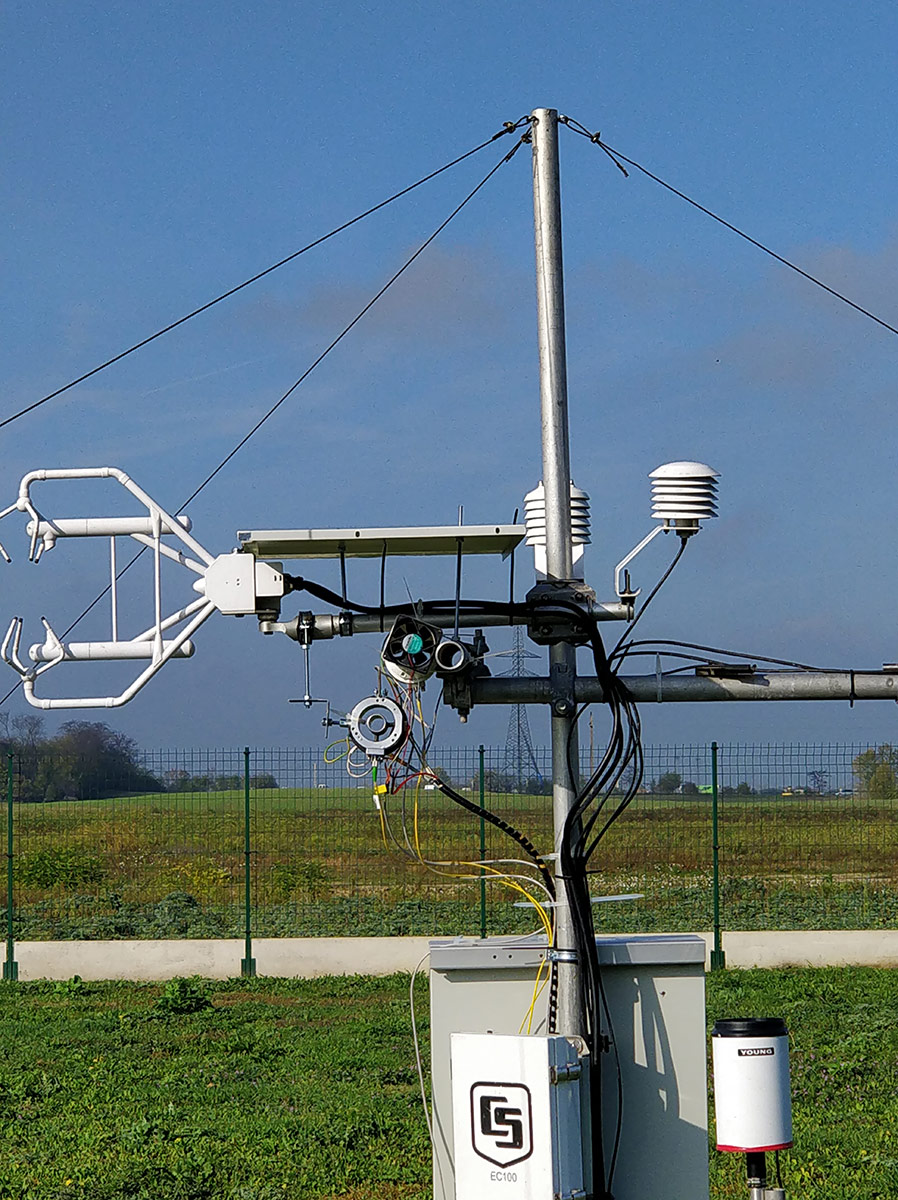Project leader:
Bozóki, Zoltán
Participating researchers:
Czóbel, Szilárd; Gulyásné Szabó, Anna; Horváth, László; Huszár, Helga; Magashegyi, István; Novák, Eszter; Torma, PéterINSTRUMENT AND METHOD DEVELOPMENT
The project aims to develop photoacoustic (PA) measuring systems which, in addition to NH3, is also suitable for the simultaneous measurement of the flux of a greenhouse gas and stratospheric ozone depleting N2O, emitted from soils, or from plants. Field investigations will be completed with laboratory, climate chamber experiments. Model development is also planned to simulate the NH3 and N2O fluxes between the soil – plant and the atmosphere.
Further planned tasks: testing, calibration, and determination of the analytical parameters of an open-chamber, photoacoustic measuring system suitable for measuring the concentration of aerosol particles. Performing flow acoustic and photoacoustic excitation numerical modelling with increased flow velocity. Developing a plan for installing the measuring system on a drone, for field use. Integrating and testing the laser light source and the open chamber.
Development of a measurement setup suitable for controlled laboratory modelling of laser-excited biomass and elemental carbon (soot) particles. Mapping of gas-phase cross-effects.
CROPLAND INVESTIGATIONS
One of our goals is the continuous high-frequency photoacoustic measurement of the NH3 and N2O flux above arable lands using the eddy covariance method. In addition, we are planning additional soil, plant, and meteorological measurements, with continuous measurement of soil NH3 and N2O emissions at several plots. Parallel measurement of the total gas emission of the soil – canopy system and the emission of the soil, in order to separate the NH3 and N2O fluxes of the soil and plant. Modelling of the NH3 and N2O fluxes between the soil – plant and the atmosphere. Development, testing and application of models.
CLIMATE CHAMBER INVESTIGATIONS
Conducting experiments in climate chambers. Measuring the concentration of NH3 and N2O in the chambers using the PA method, separately for plants and soils, to determine the extent of gas exchange between soil-air and plant-air. Testing the effect of plant drought stress and nitrogen supply on the level of gas emissions. Estimating the effect of climate change on gas emissions. It is an important question how abiotic plant stress (e.g. heat stress, drought stress) – that is currently and expected to occur more frequently in the future – affects emissions. Therefore, we perform chlorophyll fluorescence tests under stress and control conditions.
Developing high-precision, ppb-level PA measurement of the 14N/15N isotope ratio. We can follow the processes occurring in the soil – plant – atmosphere system by measuring the stable isotope ratio, taken advantage of every physical and chemical transformation involves a specific change in the isotope abundance. Since the natural ratio of 15N is only 0.36%, enrichment is necessary, in the form of 15NH4Cl added to the substrate. Further testing options and goals include the use of 15N labelling techniques with 15NH4+ and 15NO3– isotope enrichment. By using either or both of these methods in combination with the measurement of isotopic ratios of released gases, we can obtain important information on the mechanisms of processes occurring in the soil that are not fully understood yet.
INVESTIGATION OF COMBUSTION-DERIVED AEROSOL PARTICLES.
Generation and photoacoustic examination of biomass-derived and elemental carbon particles under controlled laboratory conditions. Determination of wavelength and laser parameters for PA system development. Design and development of resonator and PA detector unit. Design and development of an open-chamber system that can be installed on a drone. Investigation of the spectral response and energy characteristics of biomass-derived particles using a drone-mounted system. Atmospheric emission measurements. Laboratory measurement of the spectral response of tarball particles. Investigation of savanna fire emissions in the frame of international cooperation. Investigation of the spectral response of biomass-derived particles using a drone-mounted system. Development and finalization of measurement models. Verification of the applicability of spectral response for identifying the source of emitting biomass. Estimation of climatic effects. Verification of the applicability of drone-mounted PA systems in the immediate vicinity of emissions and in remote emission environments. Exploration of the composition and emission source characteristics inherent in the spectral response.
ELKH-SZTE Fotoakusztikus Kutatócsoport


